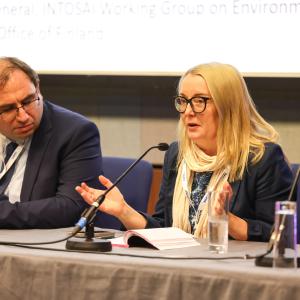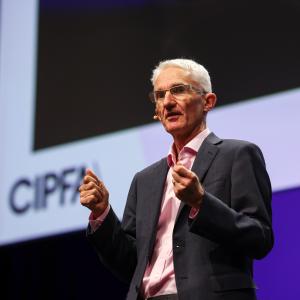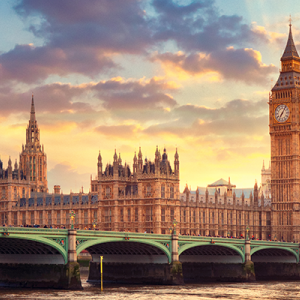15 July 2005
Christian Wolmar says the emergency services were as prepared as they could be for London's terror attacks
The tributes to the public services have been universal and well deserved. Everyone who had anything to do with the terrible carnage that befell London on July 7 has had nothing but praise for the way the authorities acted with speed, efficiency and dedication.
From the policeman who commandeered a bus to take the walking wounded from the Tavistock Square bomb, to the lady on a stuck Tube train who shouted out: 'Don't panic, I work for London Underground and they have a system to get us out of here,' the response was one of appropriate action and reaction.
None of this was luck. The lessons of previous incidents – including, of course, the attacks on New York on September 11, 2001 – have been learnt.
On the Underground, the turning point was the King's Cross fire of 1987 which killed 31 people. The response to the fire was a catalogue of errors that led to many more deaths than there should have been.
The Fennell Report into the disaster revealed that passengers had been directed down the burning escalator even though there was smoke emerging from below and that only four of the 21 staff on duty at the time had received any training on evacuation and fire drills.
The report made 157 recommendations and, by implementing them, London Transport completely changed its procedures and, indeed, its ethos.
The response to 9/11 stretched far further than transport, although the railway and the Tube were always considered to be the most likely sites to be attacked.
The government set up the London Resilience committee to review the capital's preparedness. This was an inter-agency team led by a senior civil servant, with experts from the emergency services, transport operators, utilities, NHS and local government.
Their assessment in the light of 9/11 was that while the emergency services were reasonably well geared up to tackle events that they had experience of, such as train crashes and major fires, work was needed to develop better
co-ordination and planning for other threats, such as those posed by the new form of terrorism.
London Resilience was therefore made a permanent body. It was overseen by a forum chaired by a government minister (originally Nick Raynsford but since the election Phil Woolas) with London Mayor Ken Livingstone as the deputy.
It has a permanent team at its disposal, based in the Government Office for London, comprising civil servants and people from 14 organisations. These include not only the obvious ones such as the Metropolitan Police and the London Fire Brigade but also British Telecom and the Salvation Army.
The system that has emerged from the work of London Resilience is now well
co-ordinated and rehearsed. That was apparent from the immediate response. By 9am, less than ten minutes after the first three bombs went off, the various parties involved were having a conference call.
Emergency control centres were opened up at Network Rail's headquarters in Euston, London Underground's 55 Broadway head office and the Metropolitan Police's centre at Hendon. The latter also includes the Fire Brigade and the London Ambulance Service, ensuring co-ordination between all three emergency services.
Crucially, liaison officers between these three organisations – codenamed gold, while most other major organisations are silver and local level ones are bronze – were despatched to the other centres to improve
co-ordination. As one senior rail manager put it to Public Finance, 'the days of freelance action by one party are over'.
Suggestions in the press earlier this week that there had been a 20-minute delay before a full emergency was declared were roundly dismissed by Transport for London. 'The implication that nothing much happened during that period is pure rubbish,' said a spokesman.
The rapid response was helped by good luck too. As the bombs went off, a meeting was taking place of paramedics and others involved in emergency plans, and they were quickly despatched to the various sites. Speed is crucial in trauma cases, with the treatment in the first 15 minutes often determining life or death.
There was also a meeting of senior Network Rail staff in the Russell Hotel, just yards from Tavistock Square and Russell Square Tube station. Donning their emergency jackets, they were quickly able to help out at the two nearby bomb scenes.
Of course, none of this would be necessary if further attacks could be prevented. Managers in the transport industry all stress that the primary line of defence must come from the security services.
There have been calls for technological fixes – in other words, methods to check people entering railway systems. If it can be done at airports, so the argument goes, why isn't it done on trains?
Well, it is – on the Eurostar services crossing the Channel. But that is more like an airline than a railway system, with only 7 million journeys per year. The sheer practicalities of screening the almost 3 million people who travel on a Tube train every day, with flows of tens of thousands an hour at stations such as King's Cross, Victoria and Oxford Circus, make this impossible.
There are some whizzy new technology devices in the pipeline. For example, there is a CCTV camera that can spot whether people are loitering in a station and sound an alarm. And there are scanners that can determine if there is something weird about a person's body shape – such as might be explained by a body belt of explosives – and alert staff. These would not require the constant surveillance that makes use of CCTV staff-intensive, as the systems would automatically uncover anomalies.
However clever these devices might be, they would still result in countless false positives, and would seem unable to cope with the sheer numbers involved.
There are 275 stations on the London Underground, some serving few passengers, making the installation of such equipment completely uneconomic.
On the rail system, there are 2,500 stations, which makes any notion of screening simply fanciful.
Installing such technology, therefore, would only be about public reassurance and showing the authorities were being seen to do something, rather than a realistic attempt to stop the terrorists.
In truth, the Underground and rail systems are unprotectable and the public might as well realise that.
Refreshingly, Prime Minister Tony Blair admitted as much in one of his statements in the aftermath of the bombings.
It could have been much worse. The likelihood is that the bombers were targeting Tube lines connected with mainline stations: Liverpool Street, Paddington, King's Cross and Euston, rather than Aldgate, Edgware Road, King's Cross and a number 30 bus near Euston, which is where the bombs struck.
If that had succeeded, the long-term damage to London's infrastructure, and indeed its economy, would have been far greater. Imagine if several major Tube lines had been put out of action for weeks or months, as is likely with the Piccadilly line.
The most chastening thought, however, is that July 7 might be repeated at any time and those well-worked emergency plans used again. Interestingly, the response was so comprehensive that one source said that the hospitals could have coped with six times the number of casualties and still not have been overburdened.
At least the public can be reassured from that terrible day that, contrary to much speculation in the press since 9/11, Britain's emergency and public transport services are ready and able to cope.
PFjul2005


















